The Crimson Sunbird (Aethopyga siparaja) is a stunning and charismatic bird species known for its vibrant plumage and captivating presence. Found in various parts of Asia, including India, Indonesia, Thailand, and the Philippines, this small bird is a delight for birdwatchers and nature enthusiasts. In this article, we will explore the enchanting world of the Crimson Sunbird, examining its appearance, behavior, habitat, and the significance it holds in its ecosystems.
Crimson Sunbirds images
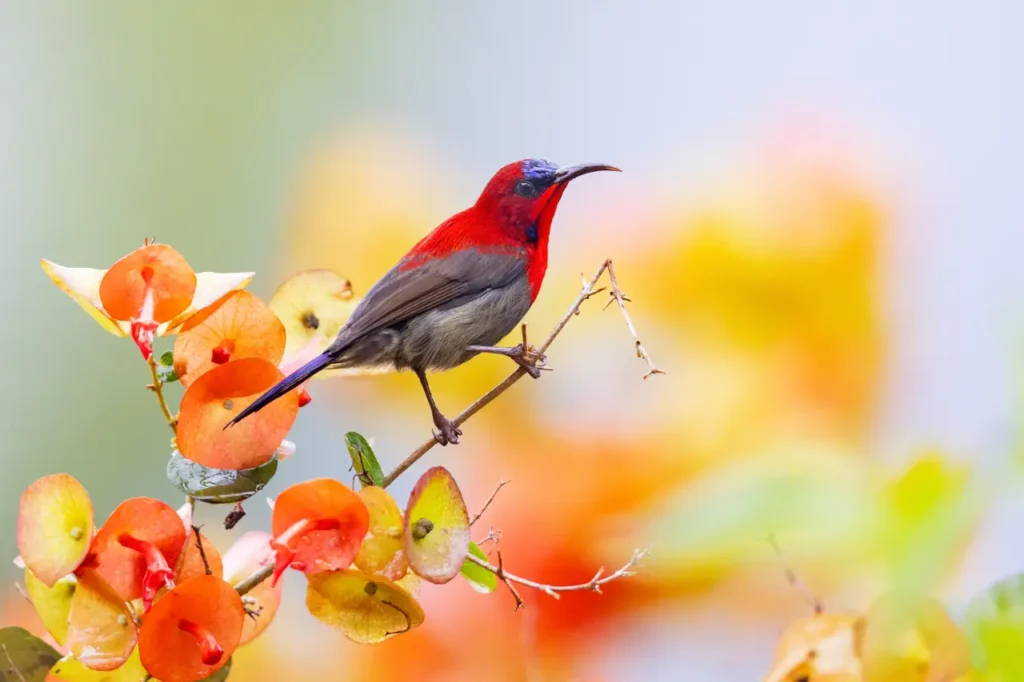
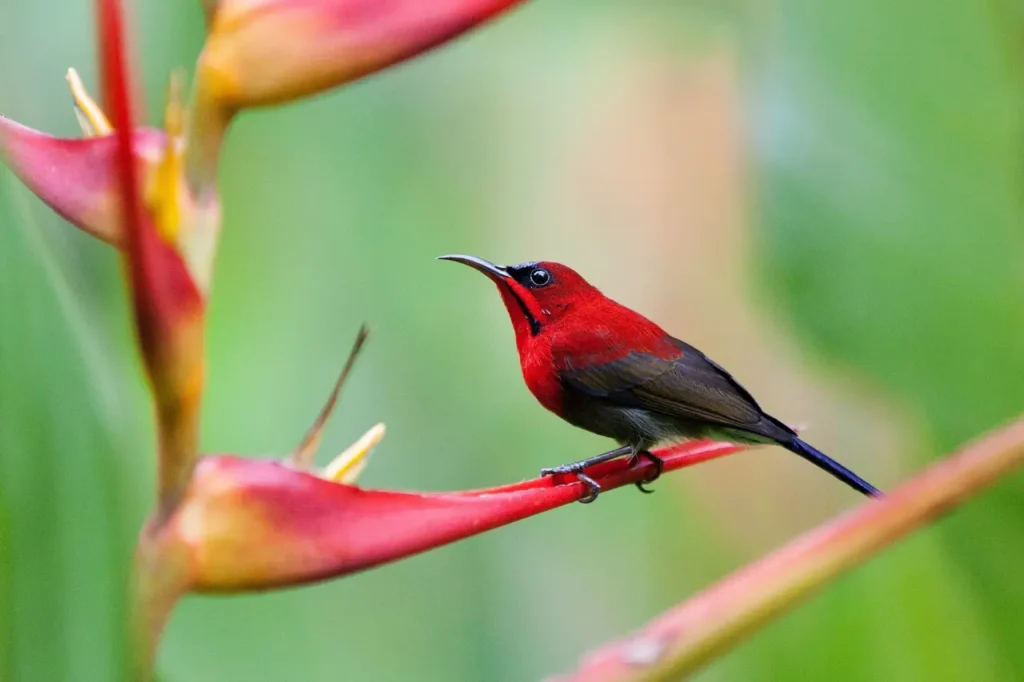
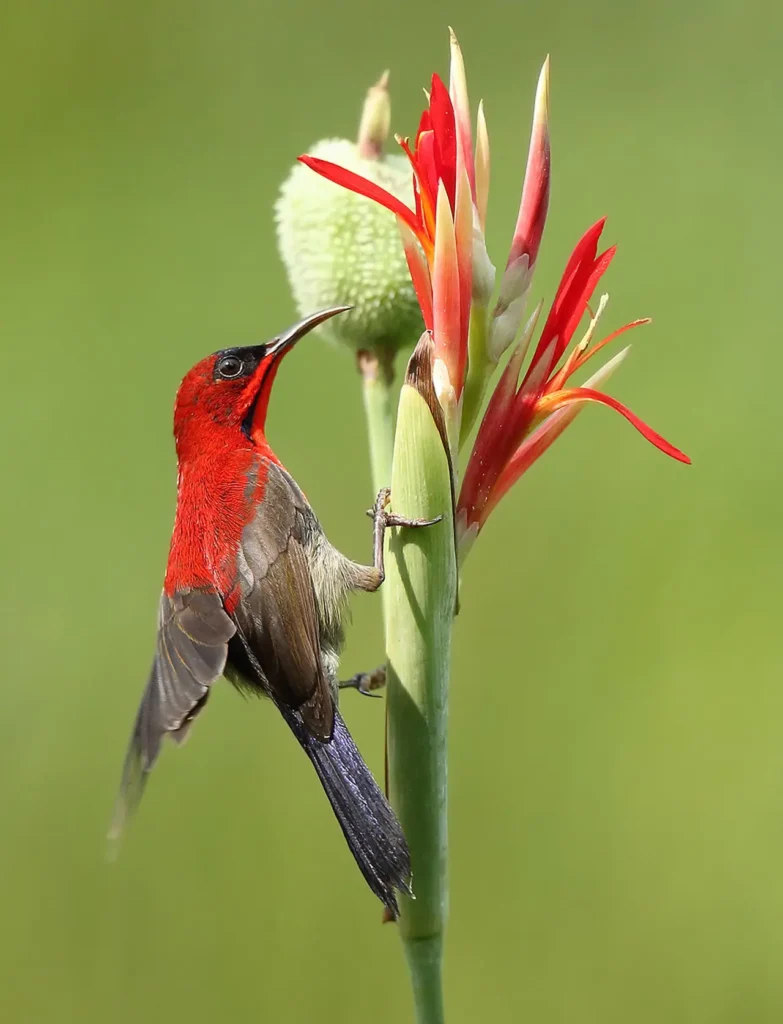
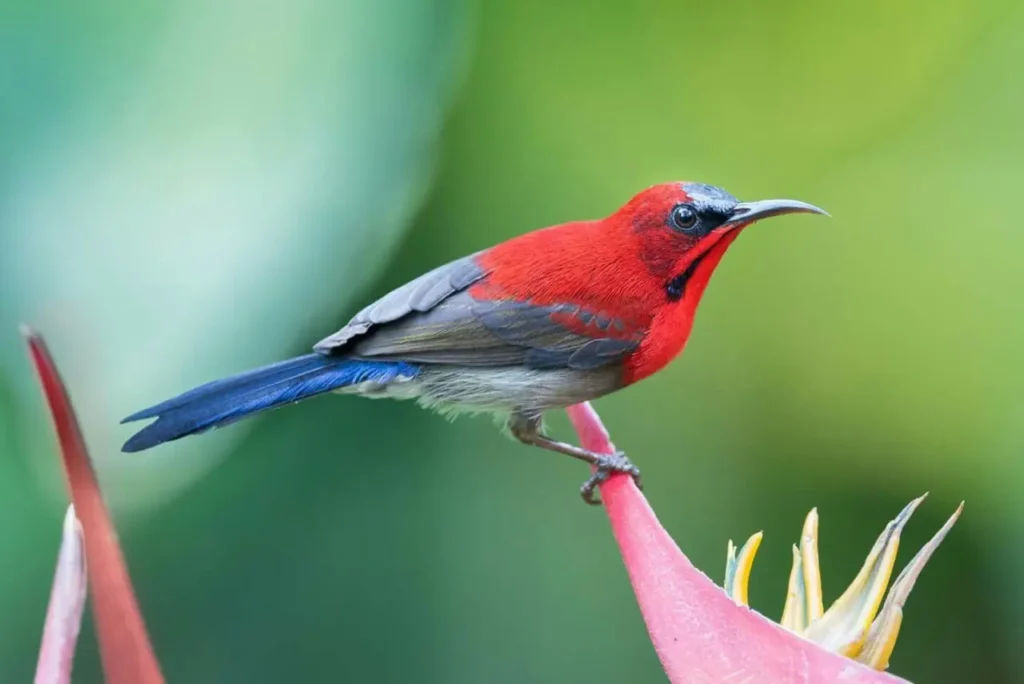
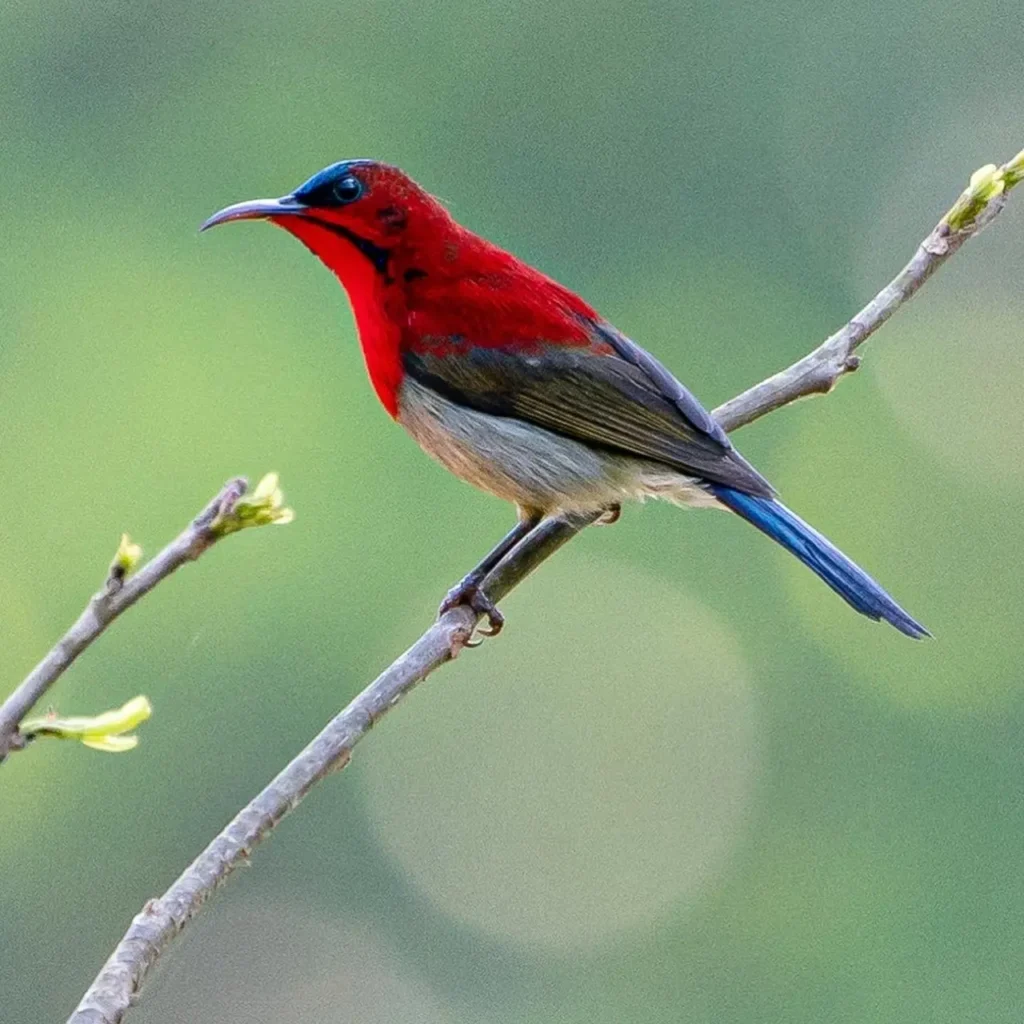
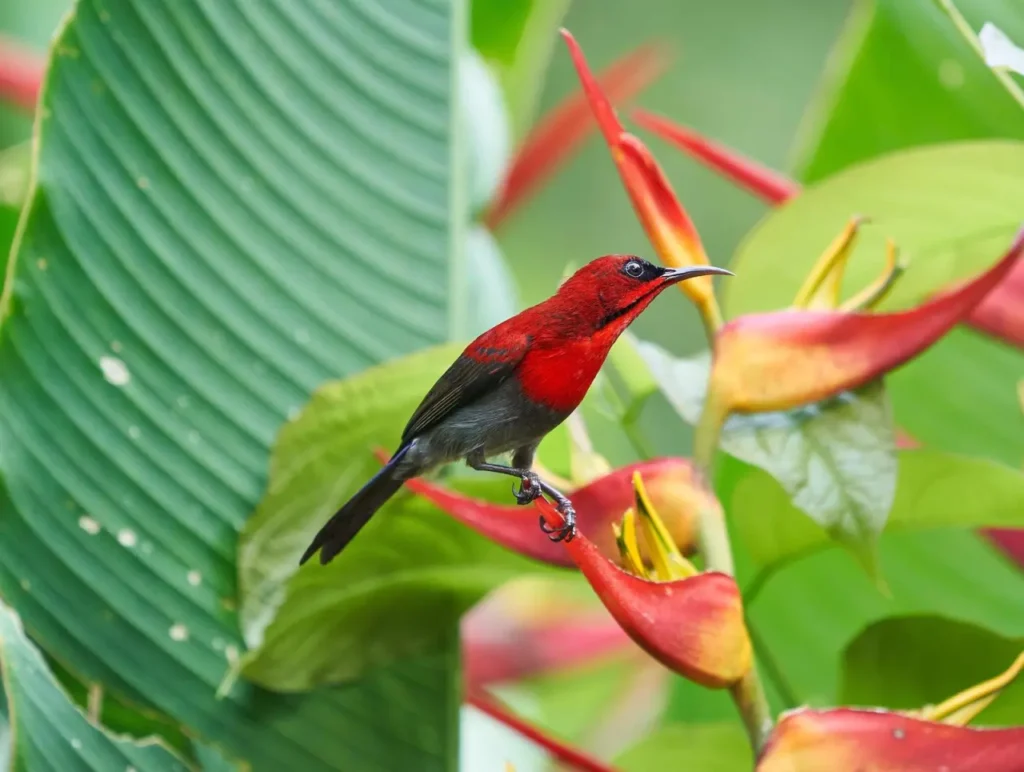
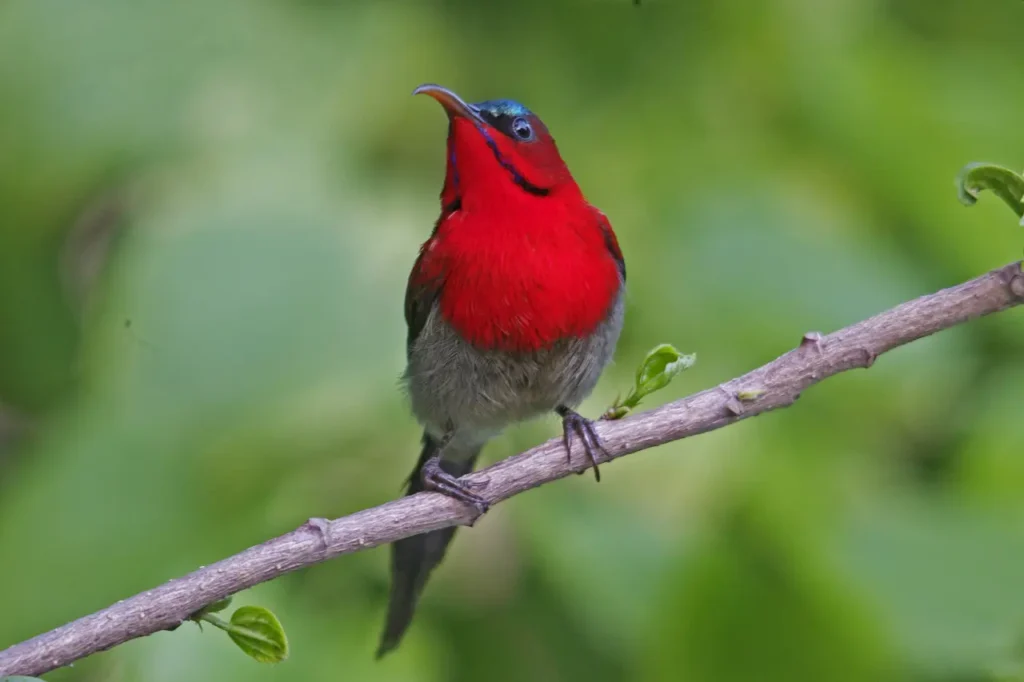
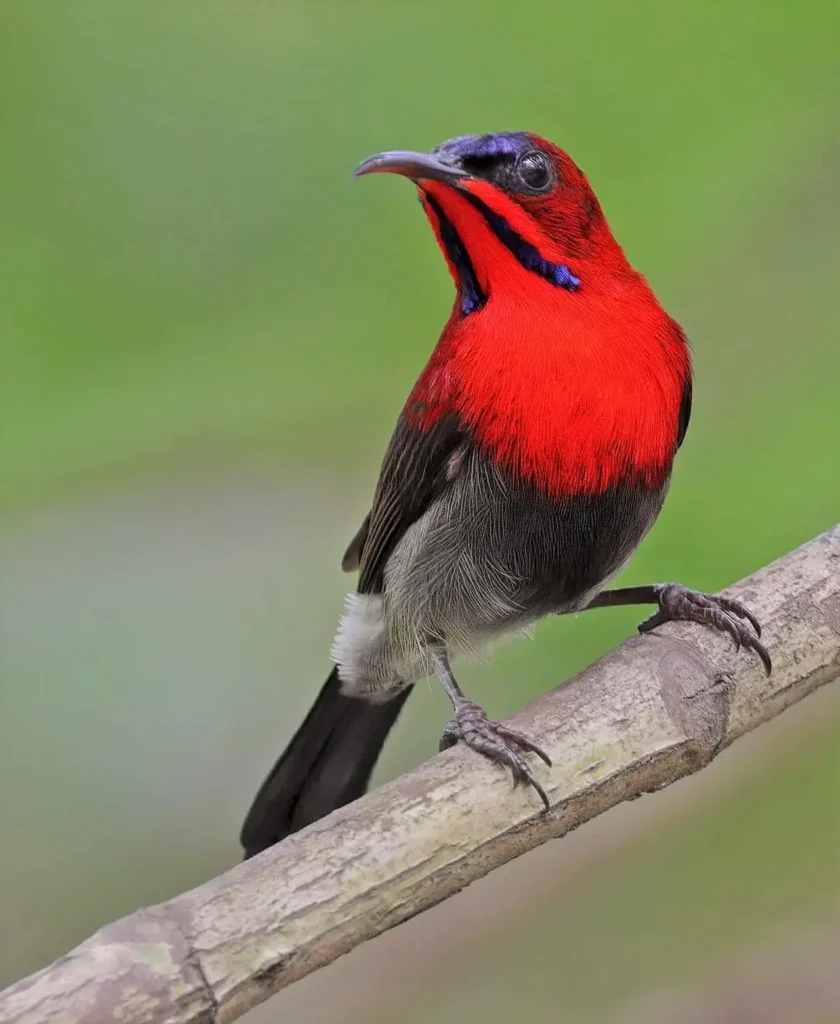
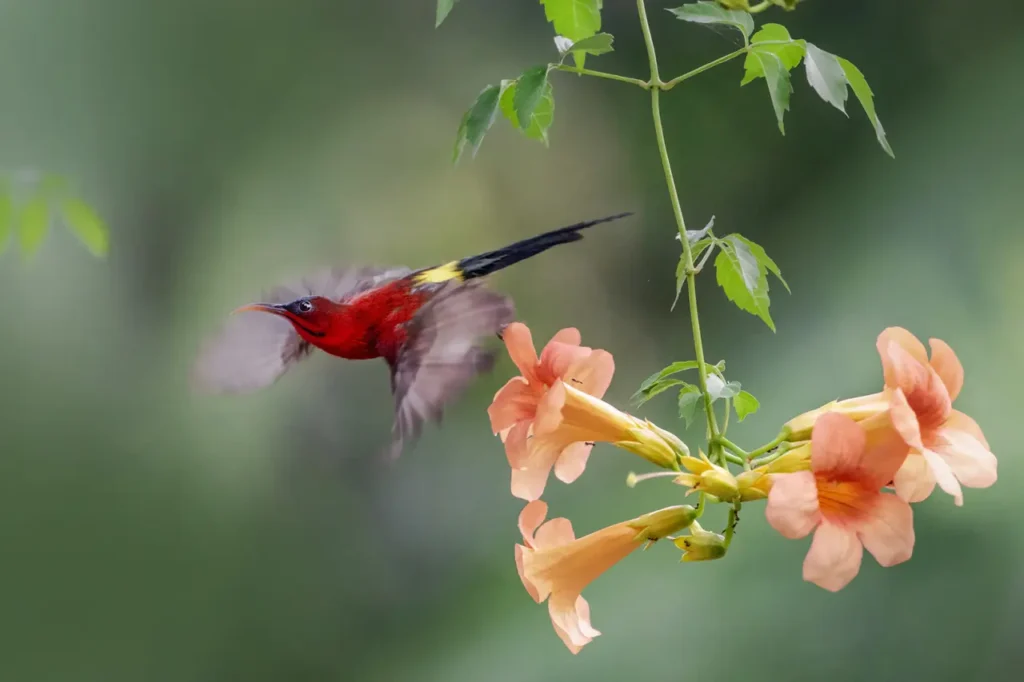
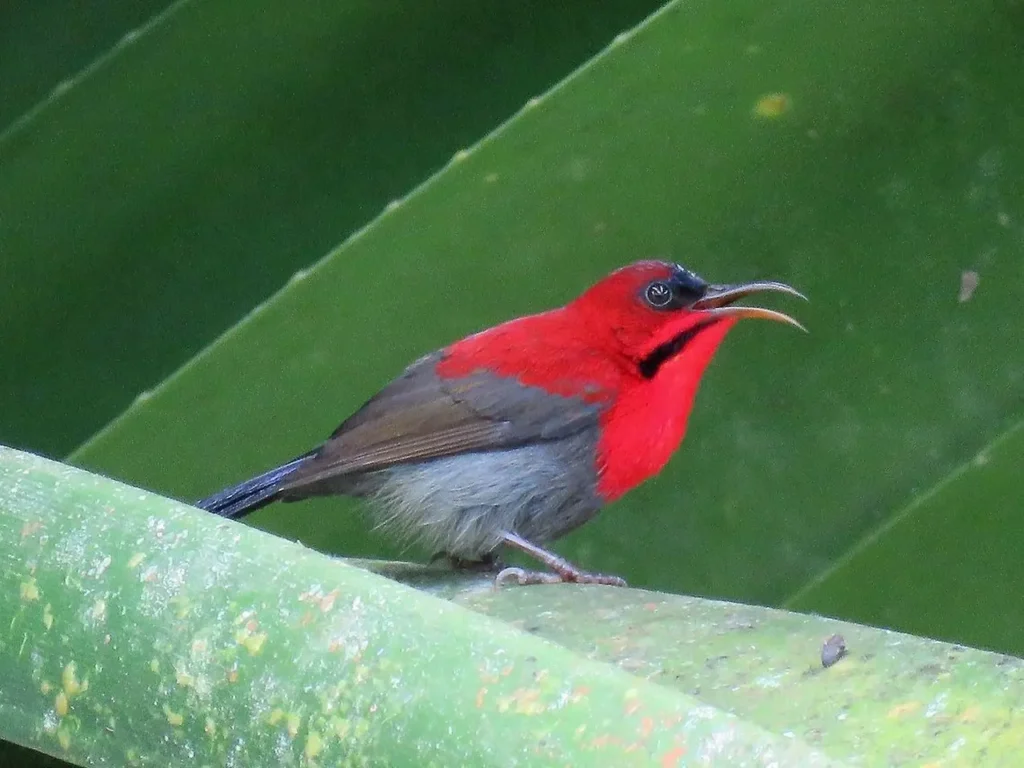
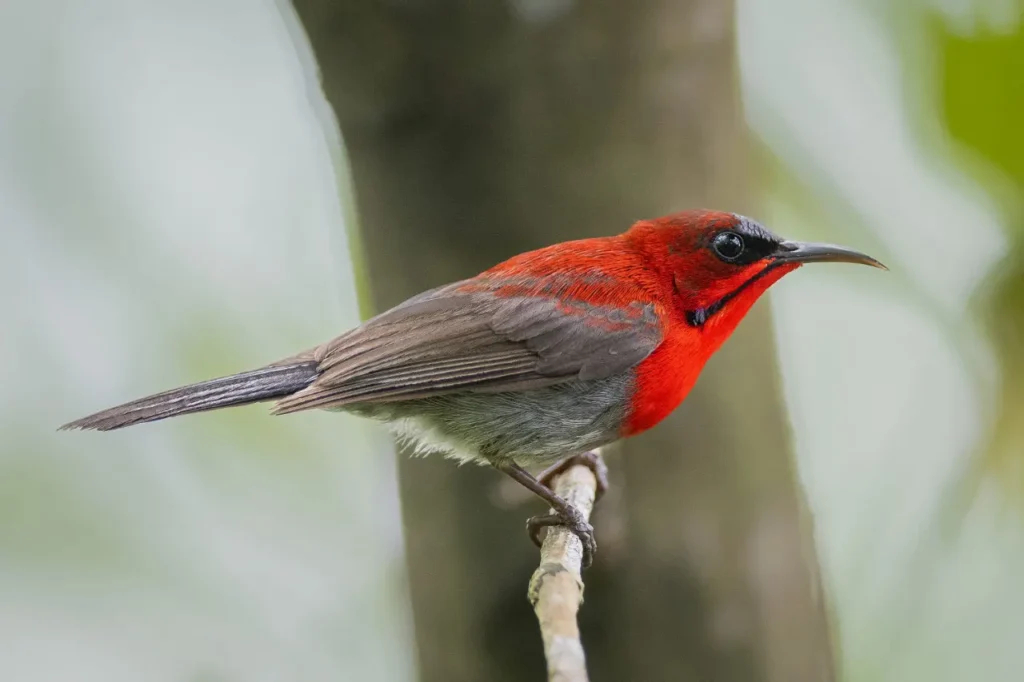
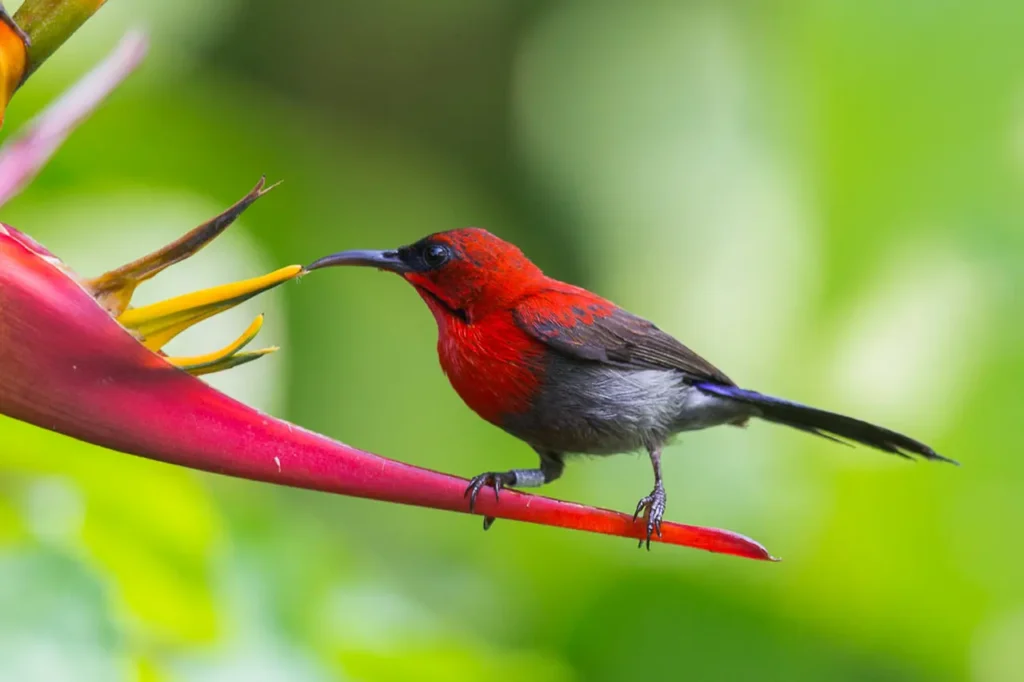
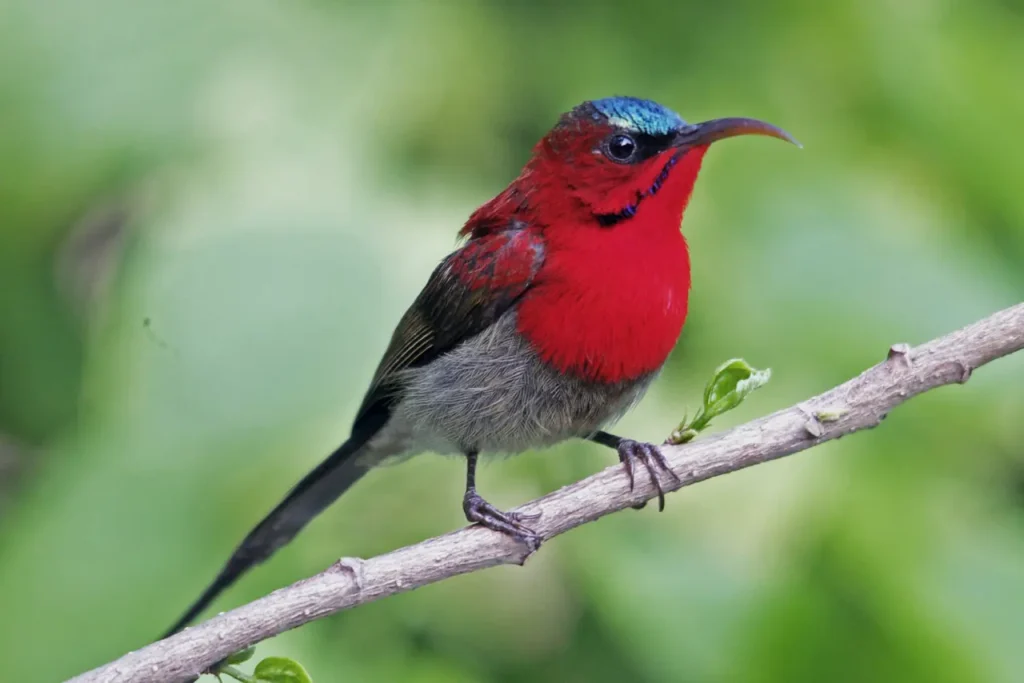
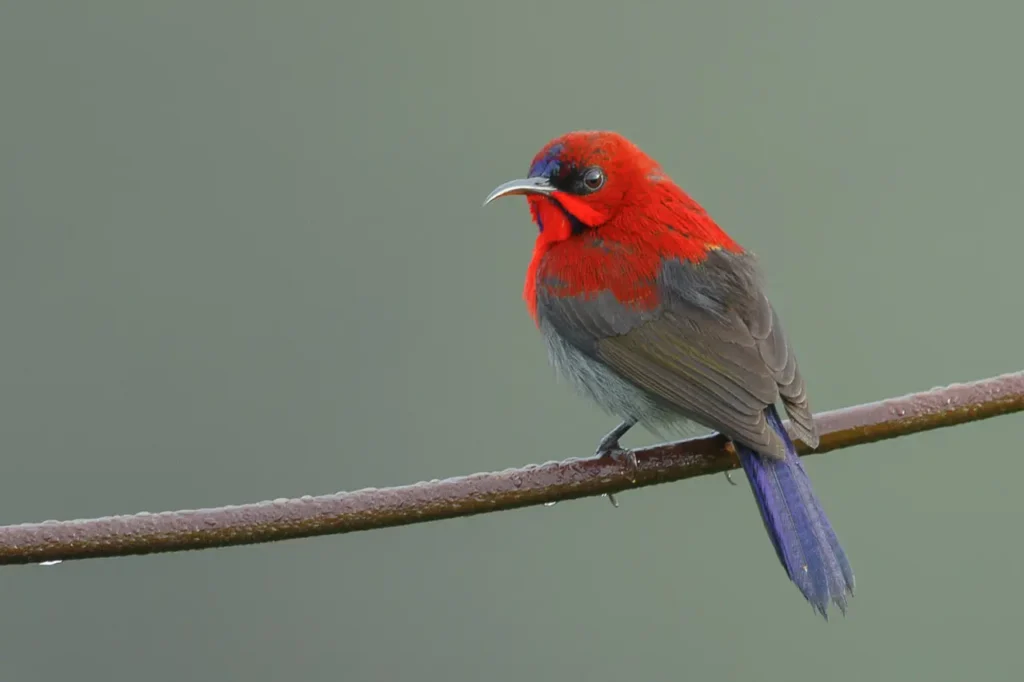
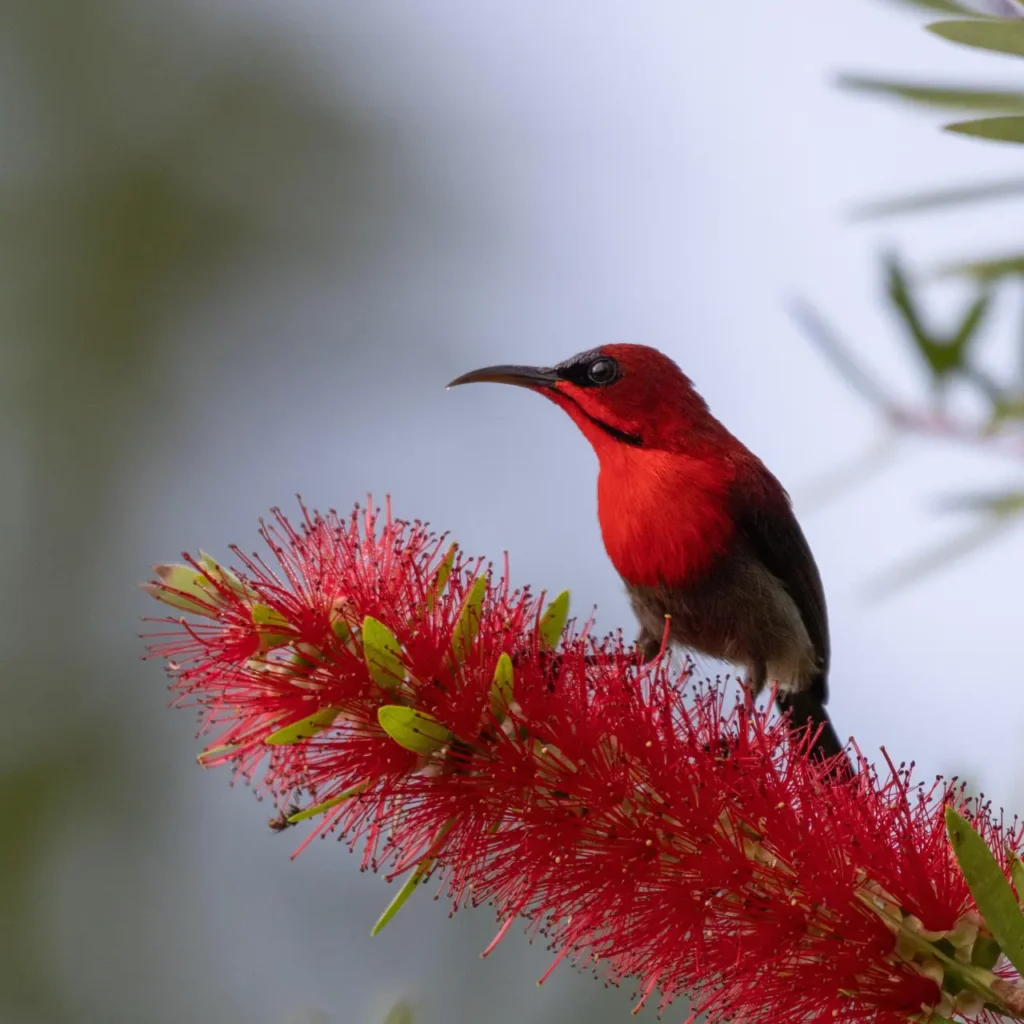
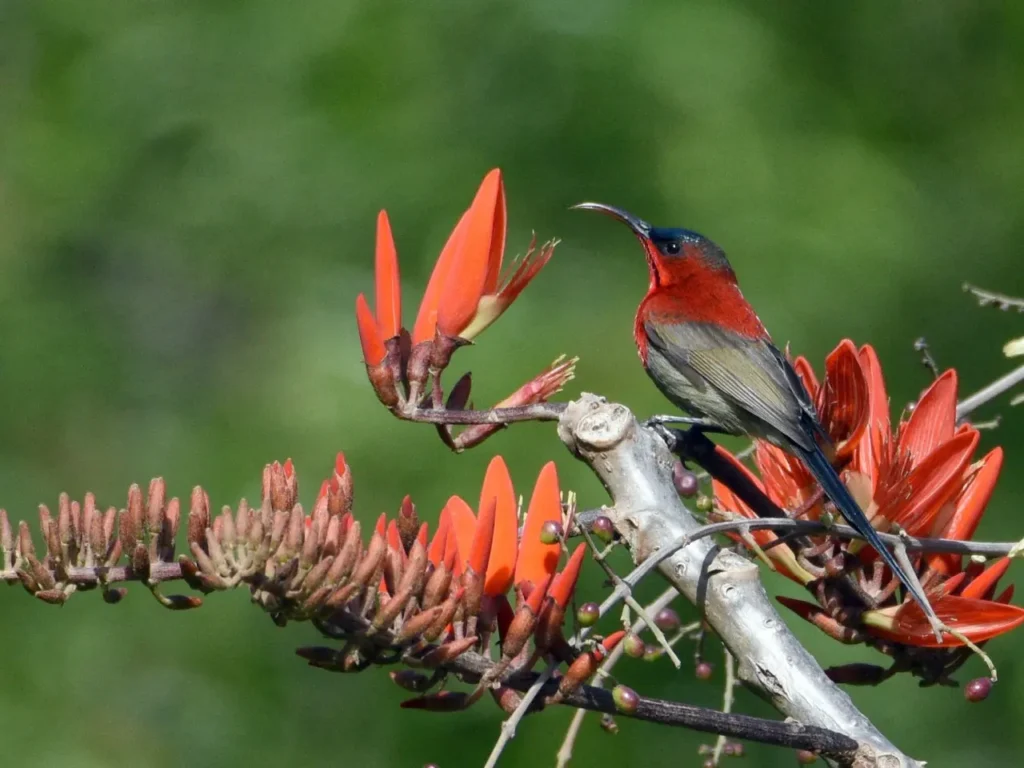
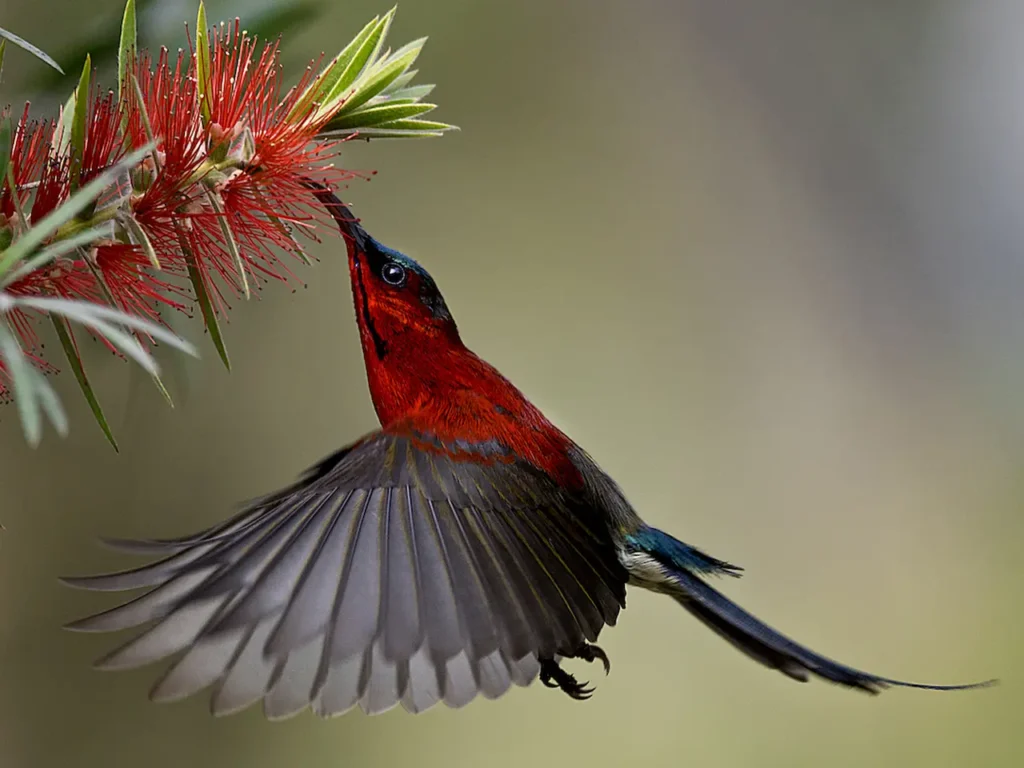
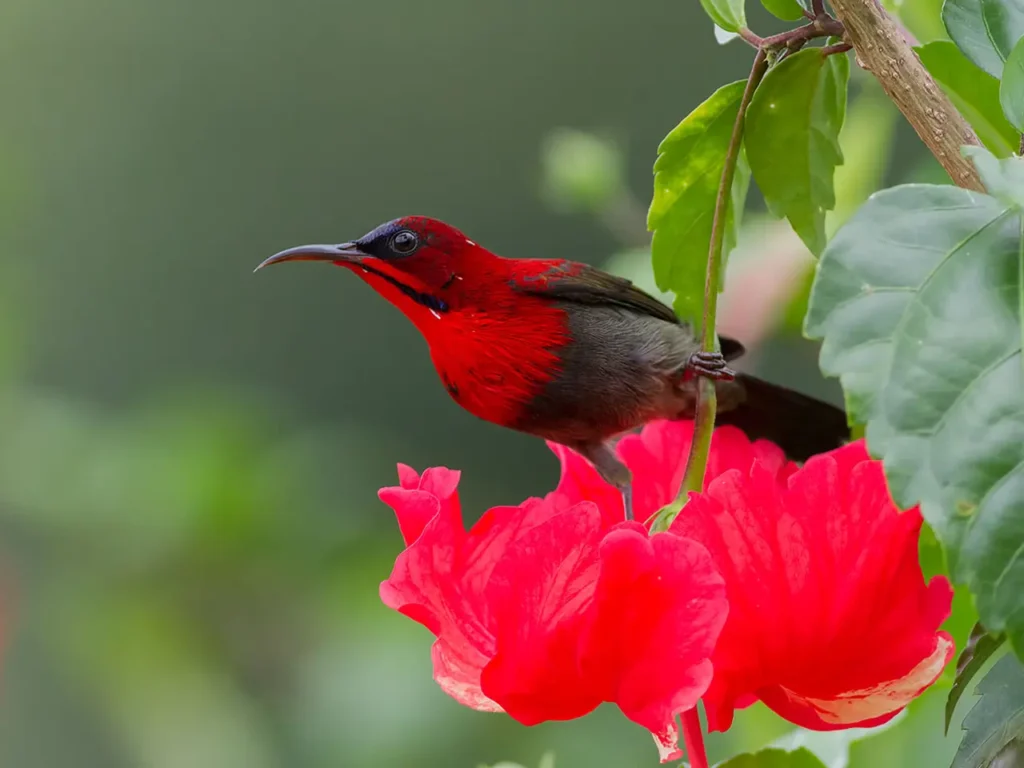
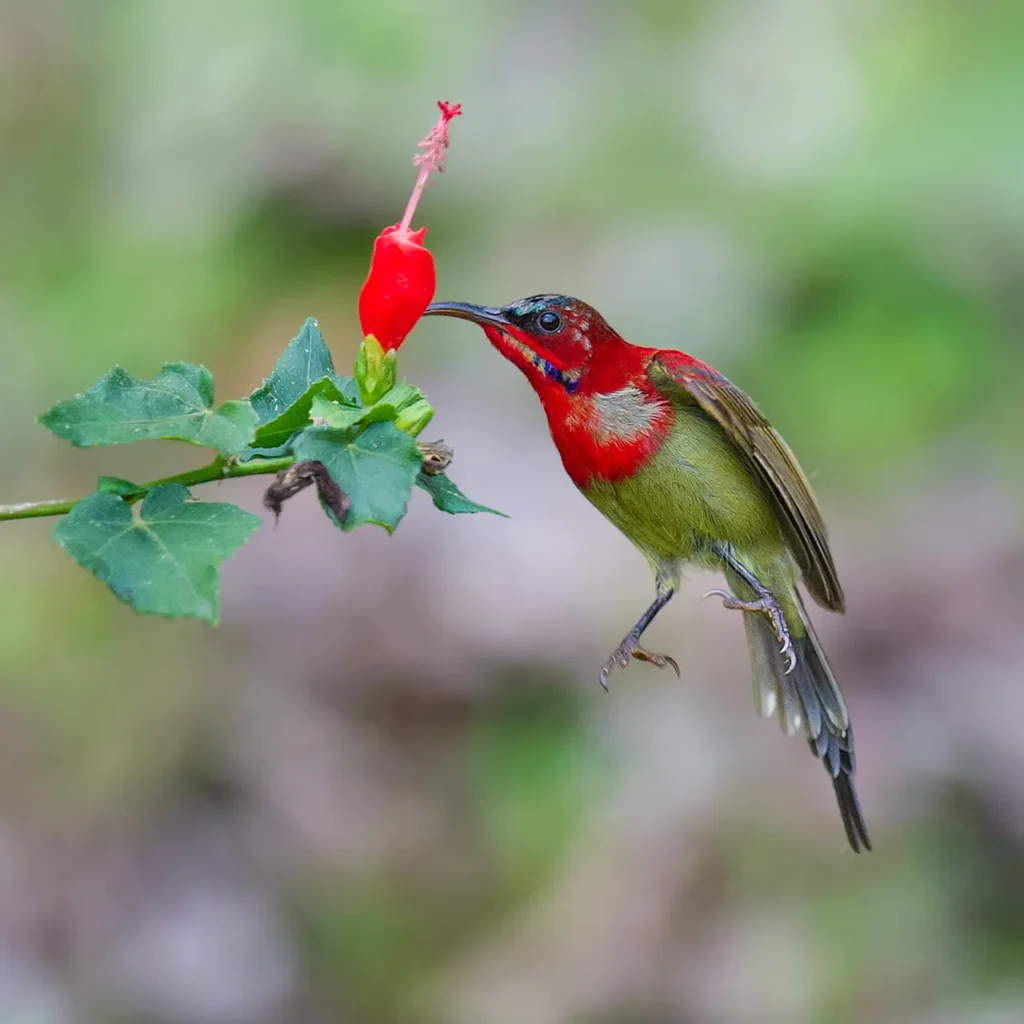
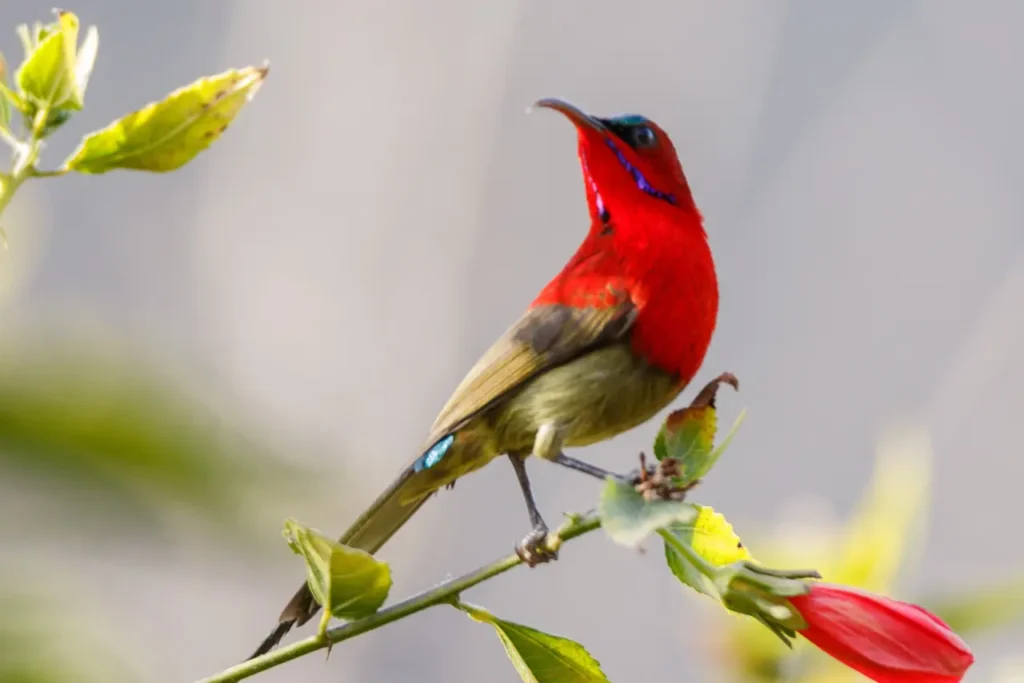
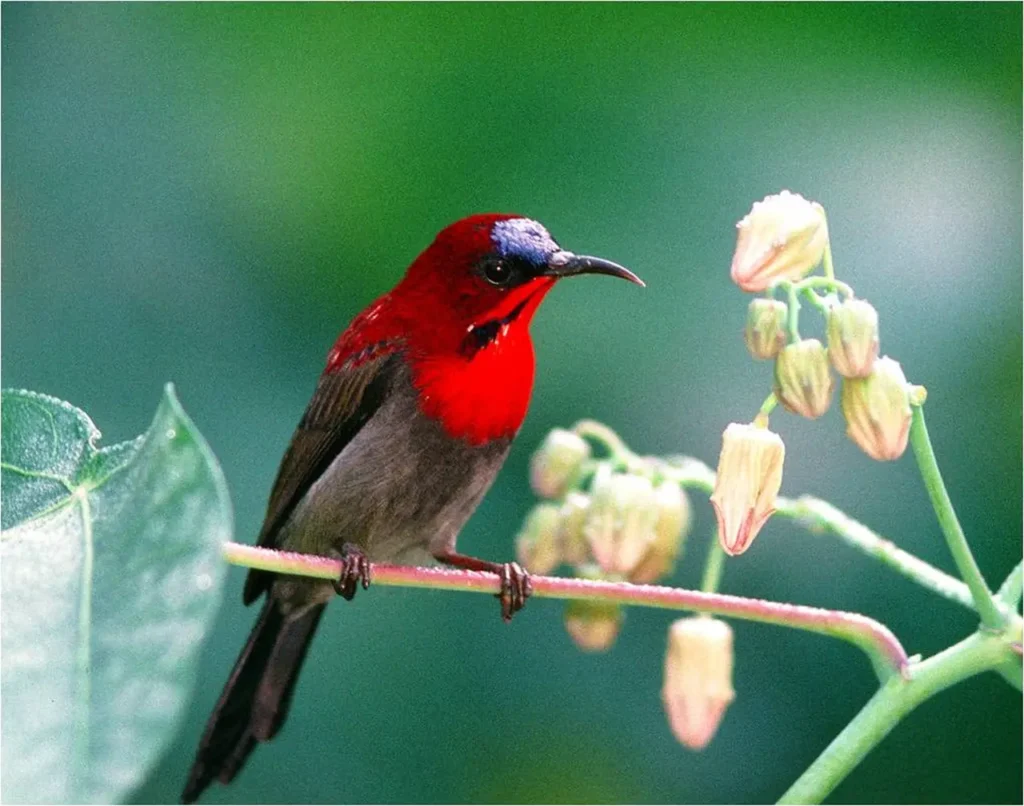
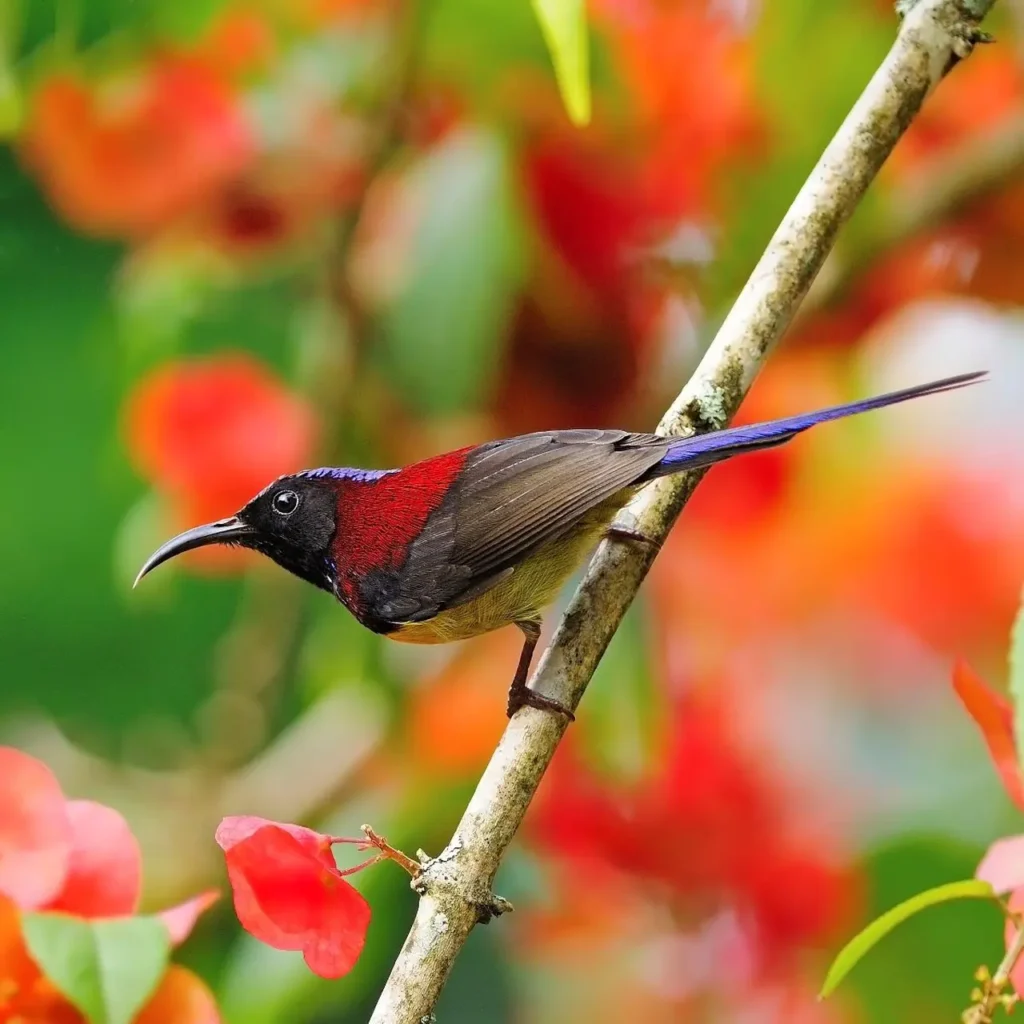
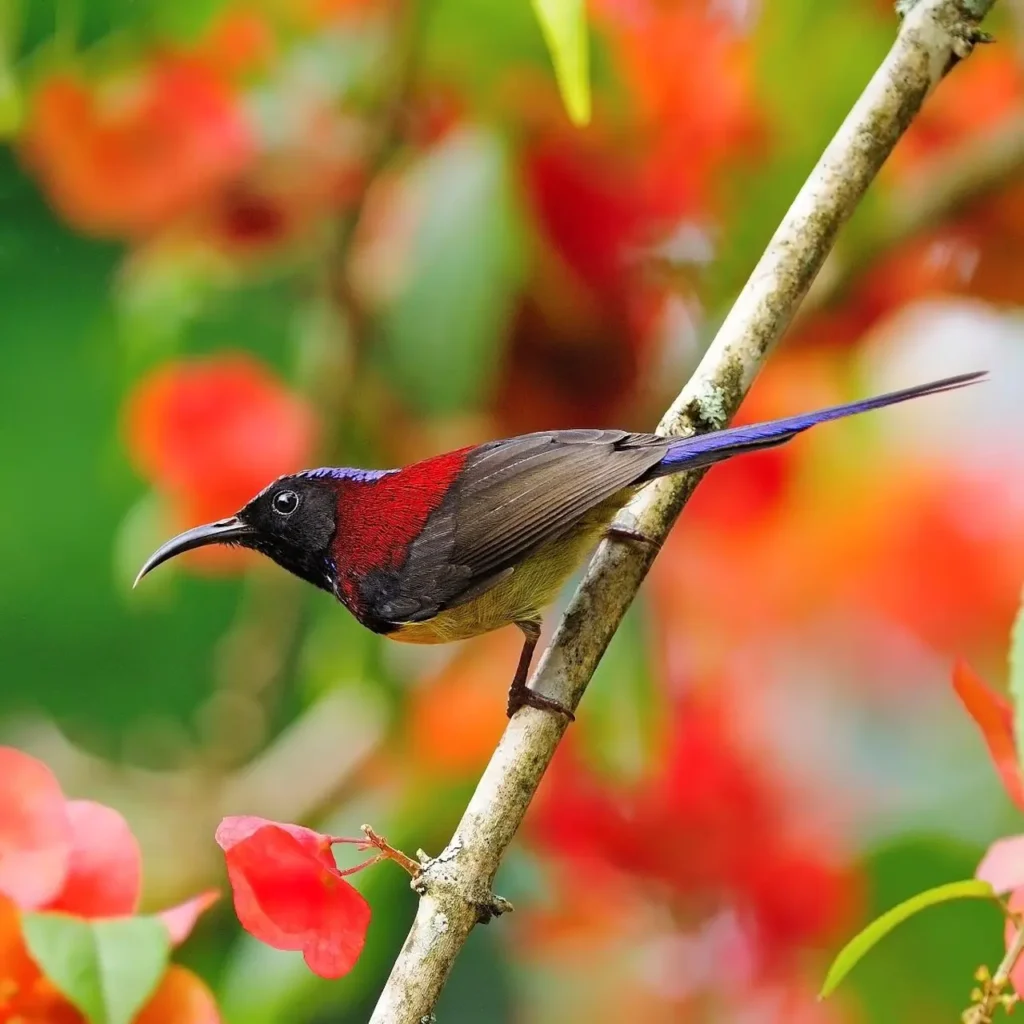
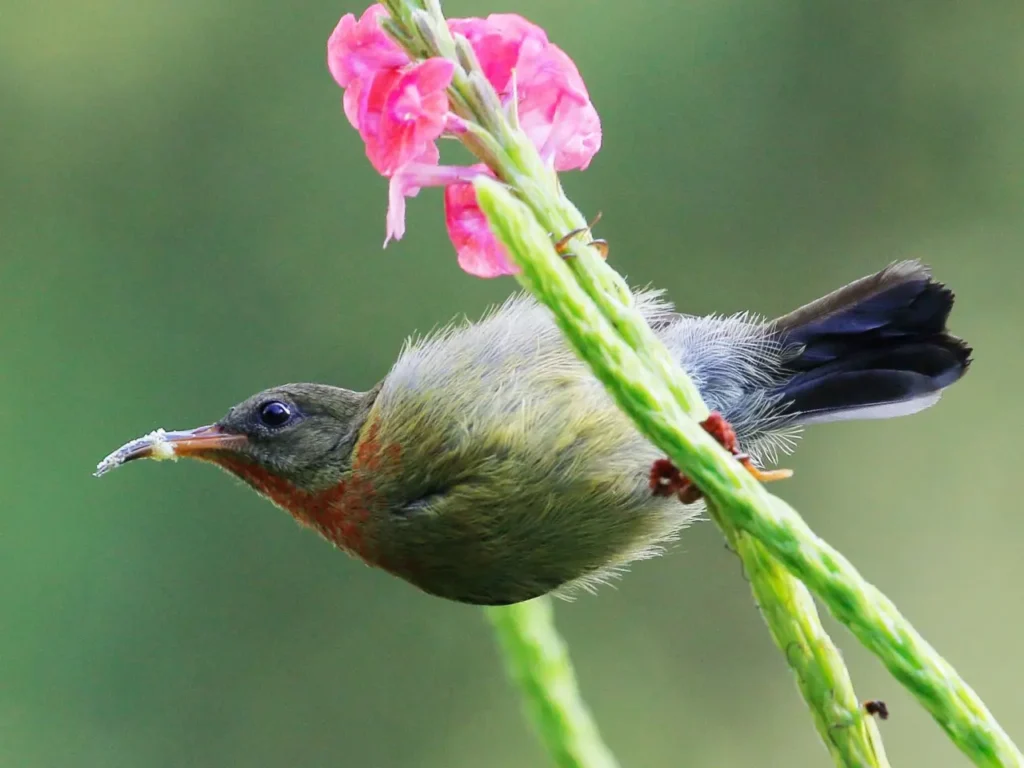
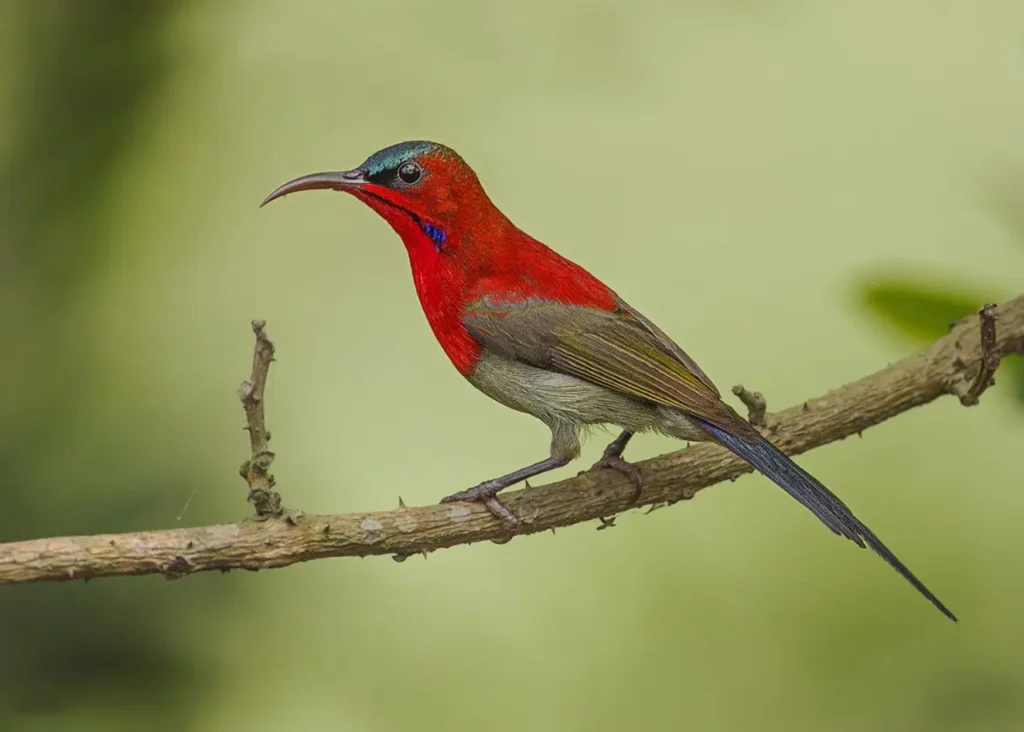
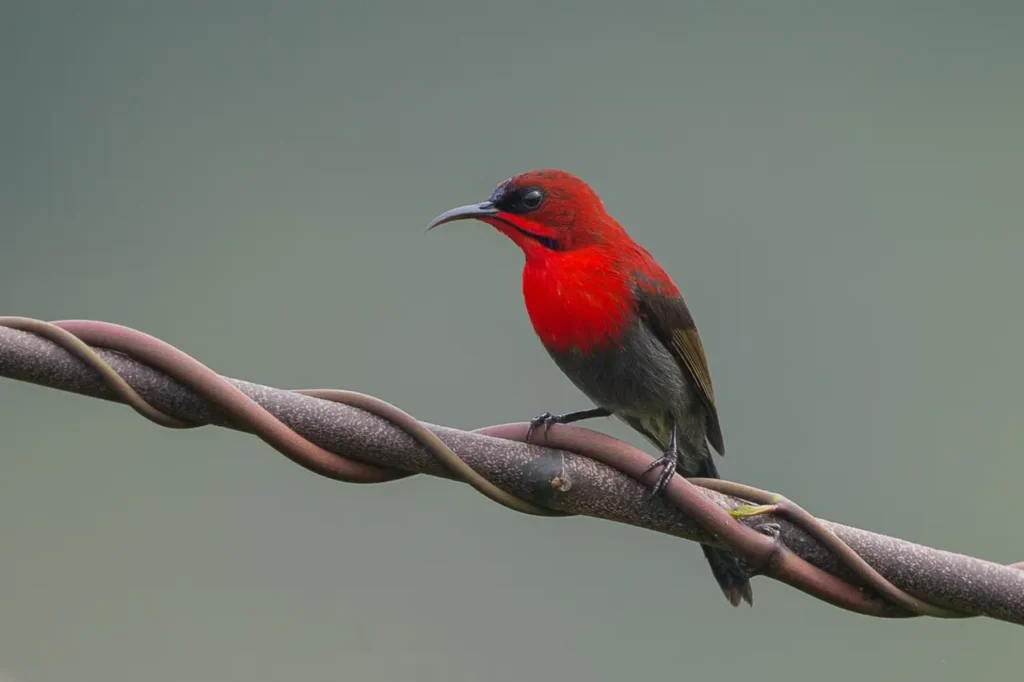
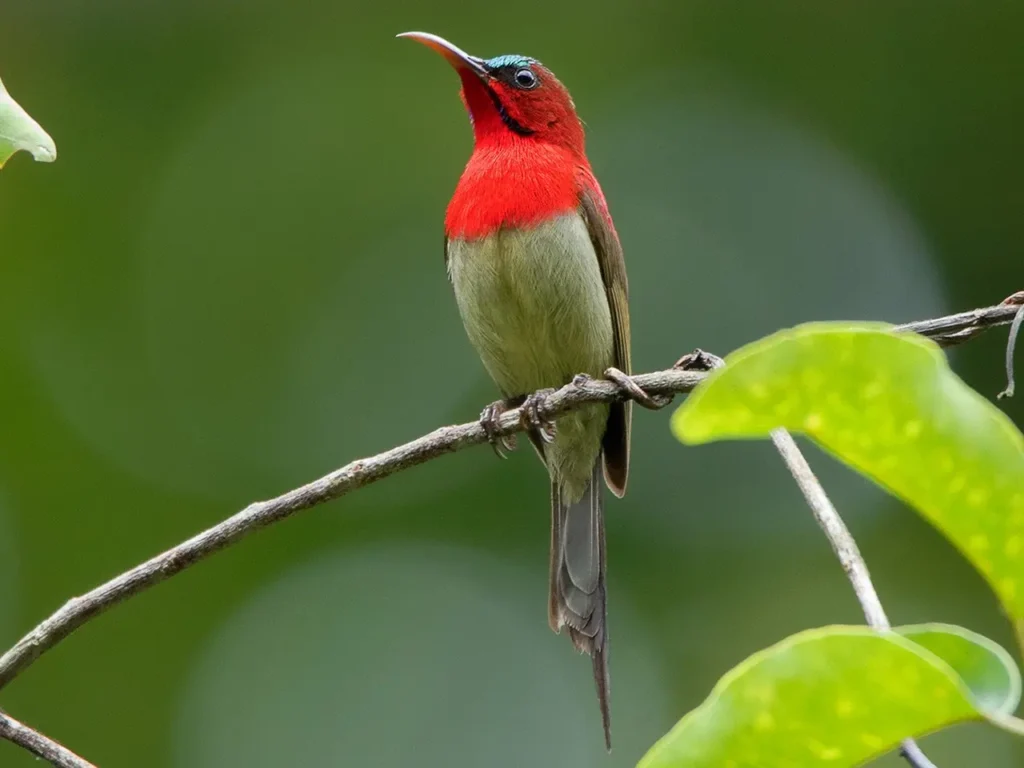
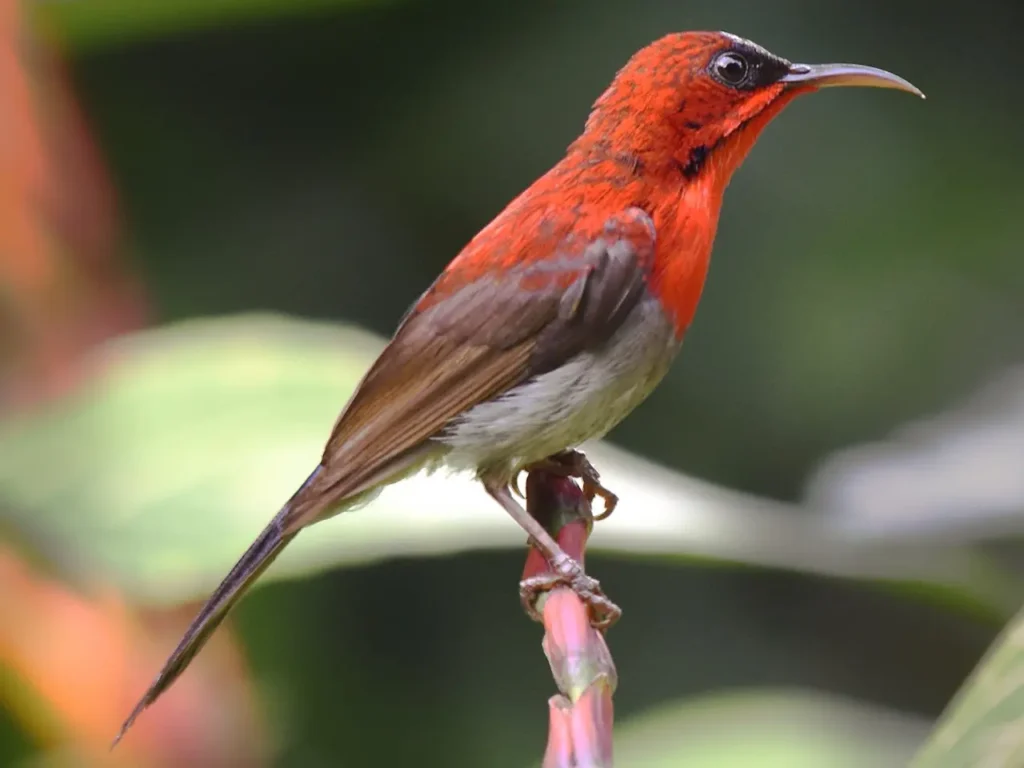
Appearance and Plumage
The Crimson Sunbird is a small bird, measuring about 10-12 centimeters (4-5 inches) in length. It displays pronounced sexual dimorphism, with the males exhibiting brilliant, iridescent crimson or scarlet plumage on their breast, throat, and upperparts. This vivid red color is truly striking and easily captures attention. The females, on the other hand, have a more subdued appearance, sporting olive-green or yellowish-green plumage, which helps them blend in with their surroundings.
Behavior and Feeding Habits
Crimson Sunbirds are highly active and agile birds. They are known for their acrobatic flights, quick movements, and ability to hover near flowers while feeding. These sunbirds primarily feed on nectar from a variety of flowers, making them important pollinators in their ecosystems. Their long, curved bills are perfectly adapted for reaching into the depths of flowers to access nectar, while their tongues have specialized brush-like tips that help them lap up the sweet reward. In addition to nectar, they also consume small insects and spiders, which provide them with essential proteins and nutrients.
Habitat and Distribution
The Crimson Sunbird thrives in a range of habitats, including tropical rainforests, gardens, parks, and mangroves. It is typically found in areas with a good supply of flowering plants that provide nectar, such as epiphytes, shrubs, and trees. These birds are adaptable and can tolerate a certain degree of habitat disturbance. However, maintaining healthy and diverse ecosystems with a variety of flowering plants is crucial for their survival and the preservation of their populations.
Breeding and Nesting
During the breeding season, male Crimson Sunbirds showcase their vibrant plumage to attract mates. They engage in courtship displays, which involve impressive aerial flights and vocalizations to capture the attention of females. Once paired, the female constructs a small, cup-shaped nest using plant fibers, leaves, and spider silk, typically suspended from the branch of a tree or shrub. The female alone incubates the eggs and cares for the young, while the male may assist by providing food.
Conservation and Protection
Crimson Sunbirds are not considered globally threatened, but like many bird species, they face challenges due to habitat loss, deforestation, and the degradation of their ecosystems. Protecting and conserving their natural habitats, preserving biodiversity, and promoting sustainable practices are crucial for their long-term survival. Additionally, raising awareness among local communities and visitors about the importance of preserving these beautiful birds and their habitats can contribute to their conservation efforts.
The Crimson Sunbird is a magnificent and captivating bird species that adds a splash of vibrant color to the landscapes it inhabits. Its role as a pollinator and its contribution to ecosystem health make it an important part of the natural world. By appreciating and protecting these enchanting birds and their habitats, we can ensure that future generations have the opportunity to marvel at the beauty and grace of the Crimson Sunbird.